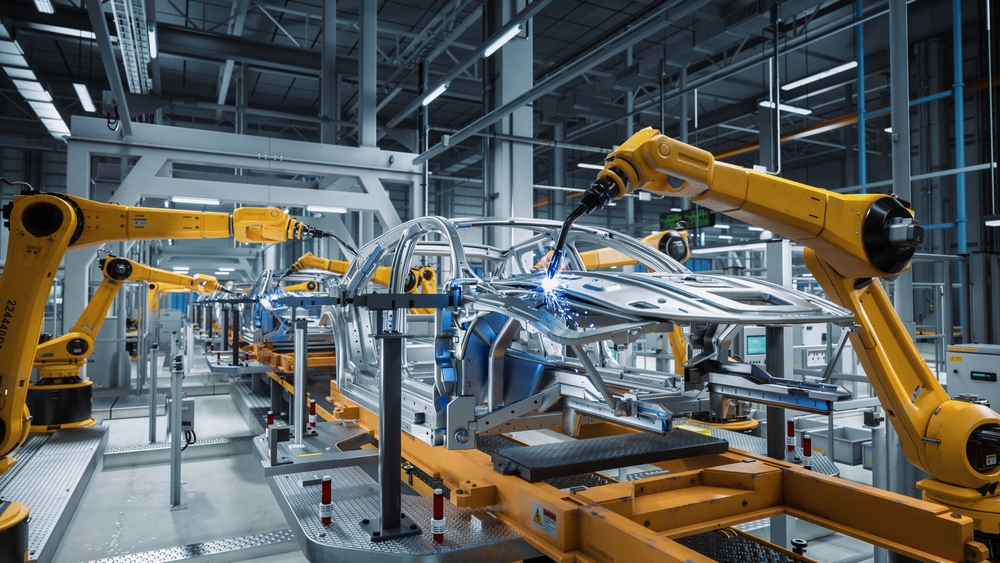Robotics is rapidly transforming the landscape of manufacturing industries worldwide, and Pakistan is no exception. In recent years, the country has witnessed a growing interest in adopting robotics to enhance productivity, improve product quality, and stay competitive in the global market. This article delves into the role of robotics in Pakistan’s manufacturing sector in 2023, exploring its benefits, challenges, and potential impact on the country’s economy.
The manufacturing sector plays a vital role in Pakistan’s economy, contributing significantly to employment generation and GDP growth. However, the sector has faced challenges such as low productivity, inadequate technological advancements, and a lack of automation. To address these issues, the integration of robotics in manufacturing processes has emerged as a promising solution.
Read more: Future of Robotics: Artificial Intelligence and Robotics 2023
Explore the Contents
- 1 Current state of Pakistan’s manufacturing sector
- 2 The emergence of robotics in Pakistan
- 3 Advantages of using robotics in manufacturing
- 4 Challenges and limitations of robotics implementation
- 5 Government initiatives and support for robotics adoption
- 6 Impact of robotics on job creation
- 7 Case studies of successful robotics implementation in Pakistan
- 8 Future prospects and potential for robotics in manufacturing
- 9 Conclusion
- 10 FAQs
Current state of Pakistan’s manufacturing sector

Before diving into the role of robotics, it is essential to understand the current state of Pakistan’s manufacturing sector. Historically, the industry has relied heavily on manual labor, leading to lower productivity levels compared to global standards. To remain competitive in the international market, there is a pressing need to embrace advanced technologies like robotics.
The emergence of robotics in Pakistan
In recent years, Pakistan has witnessed a gradual adoption of robotics in its manufacturing sector. This shift is driven by several factors, including advancements in robotic technology, increased affordability, and the desire to improve operational efficiency. The availability of skilled engineers and technicians has also contributed to the growth of robotics in the country.
Advantages of using robotics in manufacturing
The integration of robotics in Pakistan’s manufacturing sector offers numerous advantages that can propel the industry forward. Firstly, robotics can significantly increase productivity and efficiency. Automated processes can work round the clock without fatigue, resulting in higher output and reduced lead times.
Secondly, robotics improves product quality by minimizing human errors and variations. Robots are programmed to perform tasks with precision and consistency, ensuring standardized output and reducing defects. This enhances the overall quality of manufactured goods.
Additionally, the use of robotics in manufacturing can lead to cost savings. While the initial investment and setup costs may be substantial, robots can perform tasks at a lower cost per unit over their operational lifetime. They require less maintenance and can optimize resource utilization, resulting in reduced production costs.
Challenges and limitations of robotics implementation
Despite the numerous benefits, implementing robotics in the manufacturing sector comes with its challenges and limitations. The initial investment and setup costs can be a significant deterrent for small and medium-sized enterprises (SMEs). The high costs of acquiring and maintaining robotic systems can pose financial constraints, requiring careful planning and evaluation of return on investment.
Another concern is the potential displacement of human workers. As automation replaces certain tasks previously performed by humans, there is a fear of job losses. However, it is crucial to recognize that robotics can complement human labor rather than replace it entirely. The collaboration between humans and robots can lead to a more efficient and safer work environment.
Furthermore, the successful implementation of robotics requires a skilled workforce. Training programs and educational initiatives must be established to develop the technical skills necessary to operate, maintain, and program robotic systems. Bridging the skills gap is essential for ensuring a smooth transition to a more automated manufacturing sector.
Government initiatives and support for robotics adoption
The Pakistani government has recognized the importance of robotics in driving economic growth and has taken several initiatives to support its adoption in the manufacturing sector. These initiatives include providing financial incentives, tax breaks, and subsidies for businesses investing in robotics. Additionally, the government is collaborating with educational institutions to offer specialized courses and training programs in robotics and automation.
Impact of robotics on job creation
Contrary to concerns about job losses, the integration of robotics in the manufacturing sector can lead to job creation in various ways. While certain repetitive tasks may be automated, new job roles will emerge to oversee and maintain robotic systems. The need for skilled technicians, programmers, and engineers will increase, creating employment opportunities and fostering technological innovation.
Case studies of successful robotics implementation in Pakistan
Several companies in Pakistan have already embraced robotics and witnessed positive outcomes. For example, a textile manufacturer implemented robotic systems in their production line, resulting in a significant increase in production capacity and reduced defects. Another manufacturing company adopted robotic arms for precision welding, leading to improved efficiency and reduced material waste. These case studies demonstrate the potential and tangible benefits of robotics in Pakistan’s manufacturing sector.
Future prospects and potential for robotics in manufacturing
Looking ahead, the prospects for robotics in Pakistan’s manufacturing sector are promising. As technology continues to advance and become more accessible, the adoption of robotics is expected to increase further. The government’s support and ongoing initiatives will play a crucial role in encouraging businesses to invest in automation. With continued advancements and a skilled workforce, robotics has the potential to revolutionize the manufacturing landscape in Pakistan.
Read more: The Role of Artificial Intelligence in Pakistan’s Economy 2023
Conclusion
The integration of robotics in Pakistan’s manufacturing sector in 2023 holds significant promise for enhancing productivity, improving product quality, and driving economic growth. While challenges exist, the advantages of robotics in terms of increased efficiency, cost savings, and job creation outweigh the limitations. With government support and a skilled workforce, Pakistan can capitalize on the potential of robotics to bolster its manufacturing industry and compete globally.
FAQs
How does robotics benefit the manufacturing sector?
Robotics improves productivity, enhances product quality, reduces costs, and fosters innovation in the manufacturing sector. Automated processes can work continuously, leading to higher output and efficiency.
What are the challenges of implementing robotics in Pakistan?
The main challenges include the initial investment and setup costs, concerns about job displacement, and the need for a skilled workforce. Overcoming these challenges requires careful planning, government support, and educational initiatives.
Are there any government incentives for adopting robotics in manufacturing?
Yes, the Pakistani government provides financial incentives, tax breaks, and subsidies to businesses investing in robotics. These initiatives aim to encourage the adoption of automation and enhance the competitiveness of the manufacturing sector.
Can robotics replace human workers entirely?
No, robotics complements human labor rather than replacing it entirely. While certain tasks can be automated, humans play a vital role in overseeing, maintaining, and programming robotic systems.
What industries in Pakistan can benefit from robotics?
Various industries can benefit from robotics in Pakistan, including manufacturing, textiles, automotive, electronics, and pharmaceuticals. The advantages of automation apply to diverse sectors, enabling increased productivity and efficiency.



